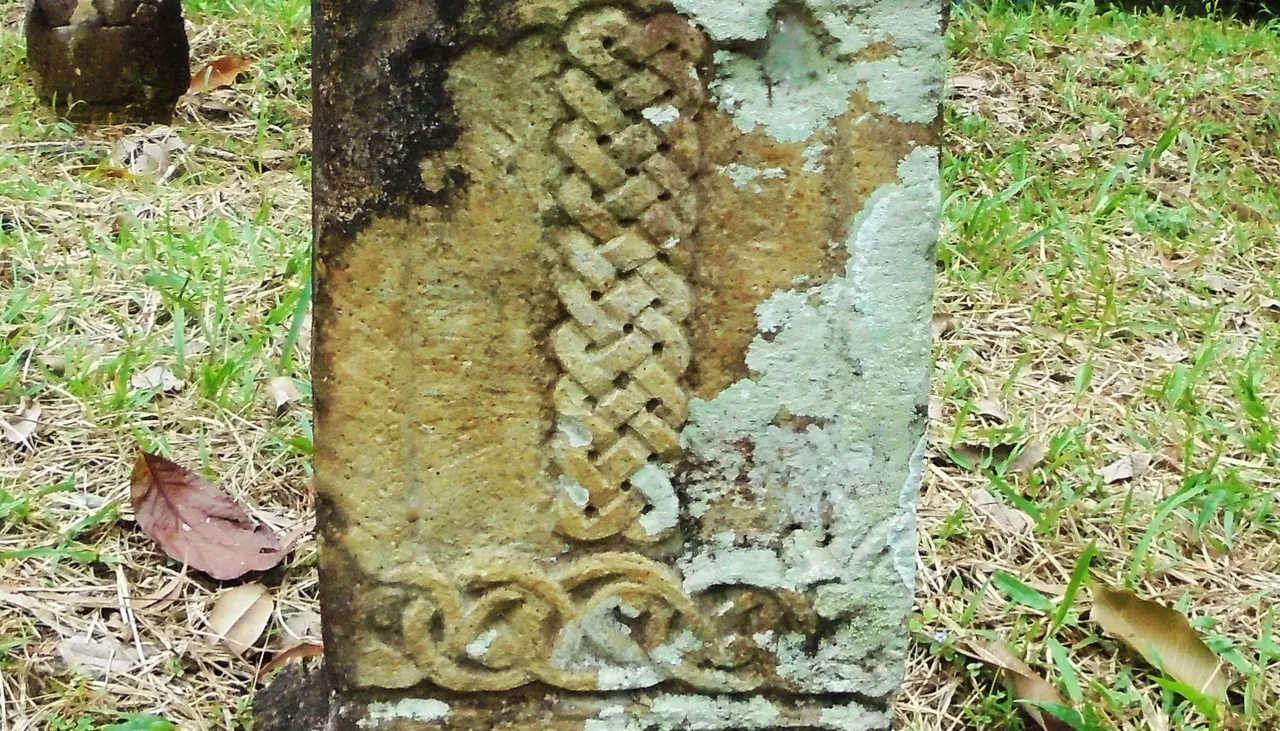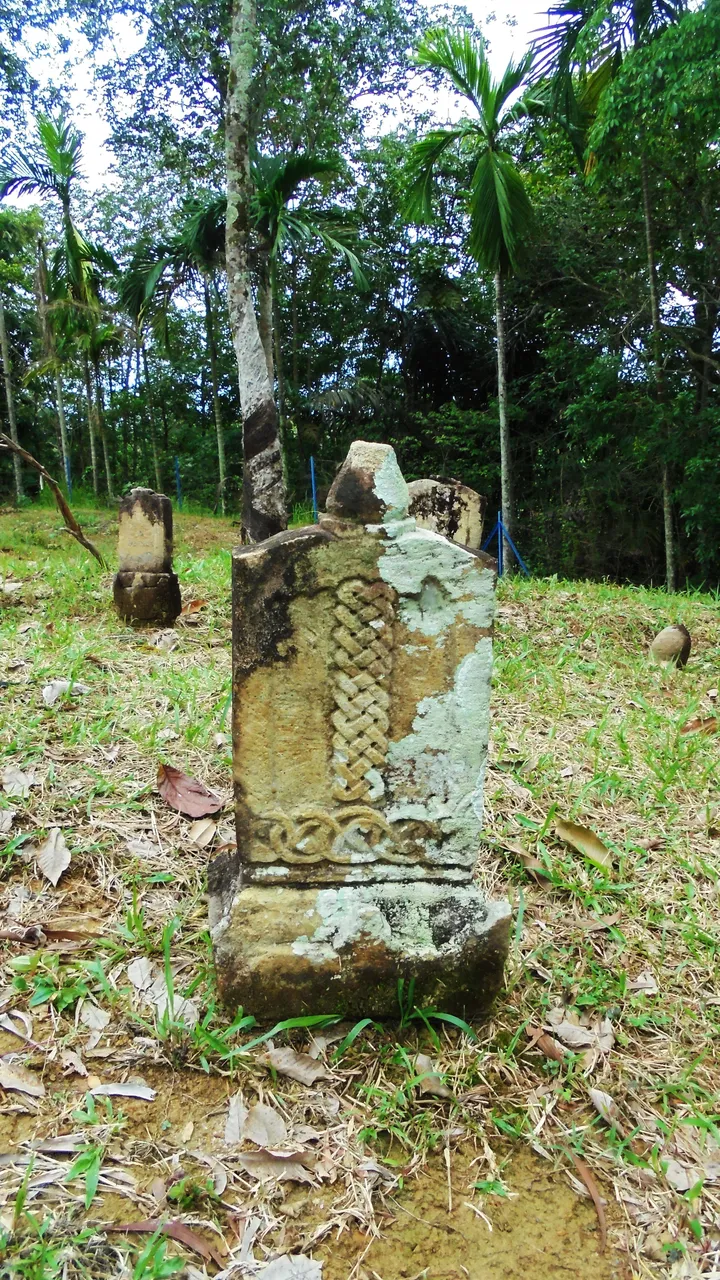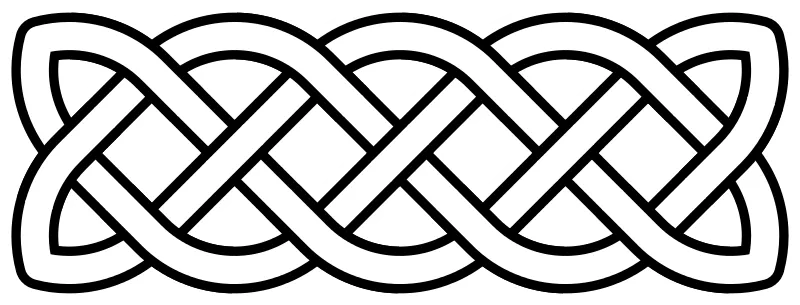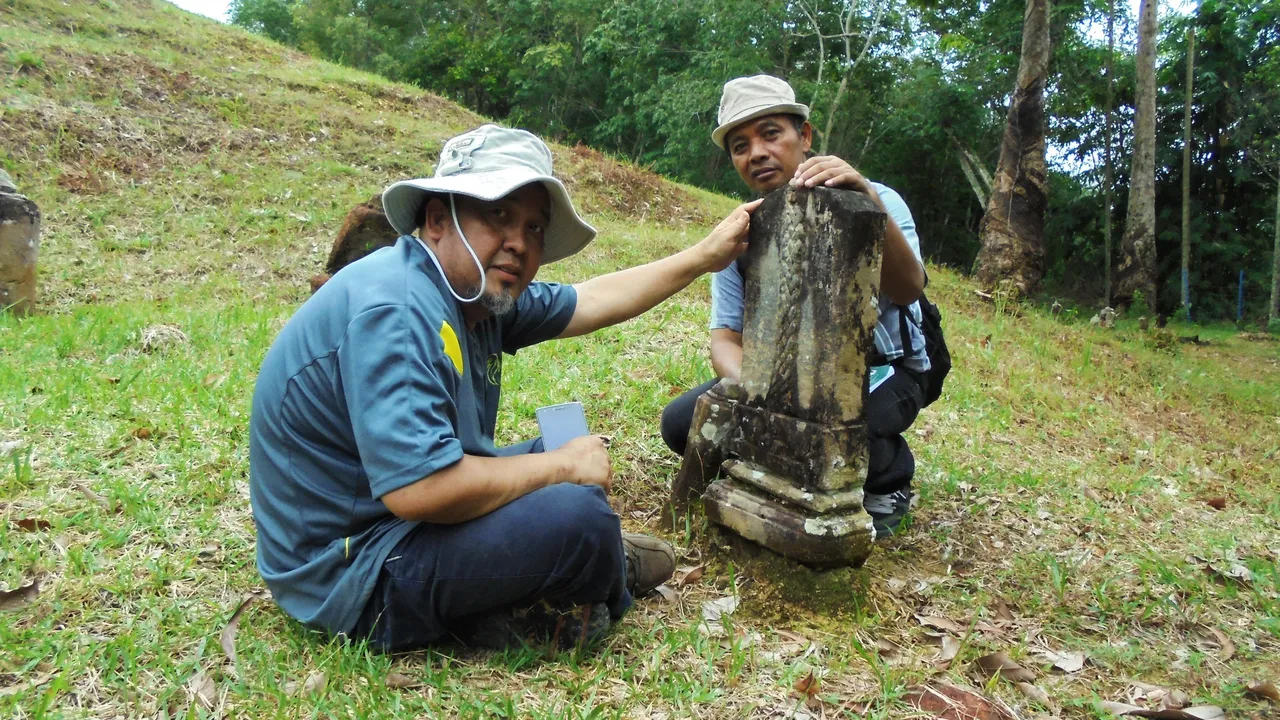Please read Sumatra Archeology - Part I: Barus (1)
Artifact: Tombstone
Site Name: Mahligai Cemetery (Makam Mahligai)
Location: Sihorbo, North Barus, Central Tapanuli Regency, North Sumatra 22564


Comment on this artifact:
This ancient tombstone is decorated with an interwoven pattern. The decor looks simple. But that is not just any ornament, behind it there is a history and symbolic meaning.
Interwoven patterns first made an appearance in the handicrafts of the Roman Empire. In the third and fourth centuries AD, knot patterns were first seen—an art form that was soon adapted to mosaic floor patterns too. This art form was used a lot in Byzantine architecture, Celtic art, Coptic art, Islamic art, etc. (Source)
In Western culture, this interwoven pattern is also known as the Celtic knots, which are various vertices and stylized graphical representations of the knot used for decoration. Most are endless knots. (Source) TThis type of ornament is also called Guilloche, as described in the Illustrated Dictionary of Historic Architecture (Ed. By Cyril M. Harris Dover Pub 1977), is "An ornament formed by two or moire bands twisted over each other in a continuoius eries, leaving curcular openings which are often filled with round ornaments." (Source) Tightly twisted bands form a rope-like twist, loosely twisted ones form circular or oval compartments, and multiple strands form an elaborate plait. (Source) But in terms of art in general, it is called interlace pattern.
In interlace, bands or portions of other motifs are looped, braided, and knotted in complex geometric patterns, often to fill a space. (Source)

These interlacing patterns are patterns of lines and shapes that have traditionally dominated Islamic art, (Source) and common in Islamic ornament. They can be considered a particular type of arabesque. Umayyad architectural elements such as floor mosaics, window grilles, carvings and wall paintings, and decorative metal work of the 8th to 10th centuries are followed by the intricate interlacings common in later medieval Islamic art. Interlaced elaborations are also found in Kufic calligraphy. (Source)
From the brief description above, interwoven patterns, interlacing patterns, Celtic knots, Guilloche appear to be terms referring to a decorative pattern which according to one opinion comes from Roman times, then spread widely with the spread of Roman influence. This opinion even states that in fact, this pattern has been found in practically every corner of the Roman Empire, from North Africa to Britain. After Rome fell, guilloche was integrated into local designs of many of these regions. Some Islamic patterns of interweaving bands may have been originally inspired by Roman guilloche. The famous Celtic and Anglo-Saxon motifs of knots and twisted bands were also very likely influenced by the Roman pattern. (Source) But according to another opinion, Guilloche has also been found in ancient Assyrian architecture in Nimroud (Nimrud) near the present-day city of Mosul in Iraq, and sometimes symbolizes eternity.
That may be the short story about this ornamental pattern until then it is also found spreading in Sumatra, as on this ancient tombstone in Barus, in a place where it is very far from the places in that story.

Previous posts in this subject: